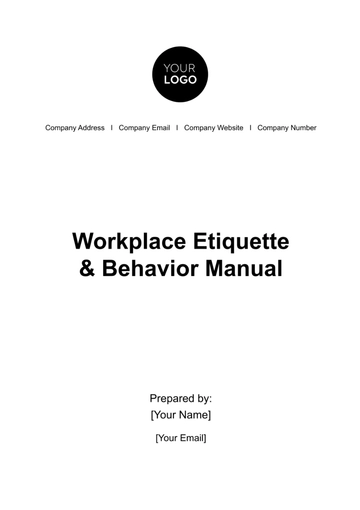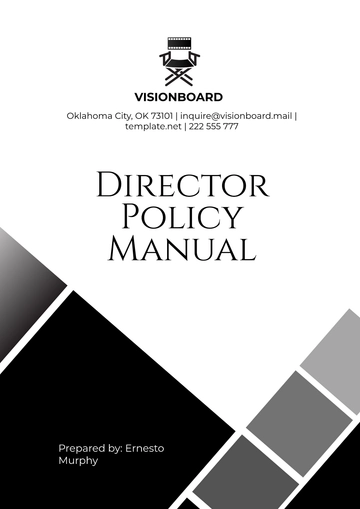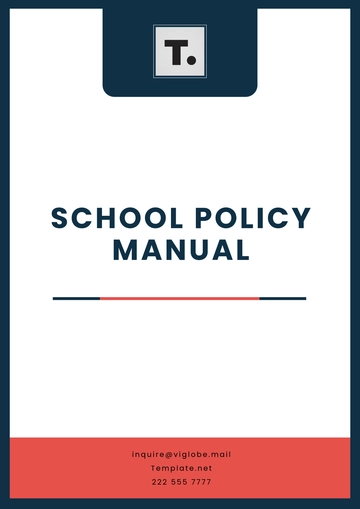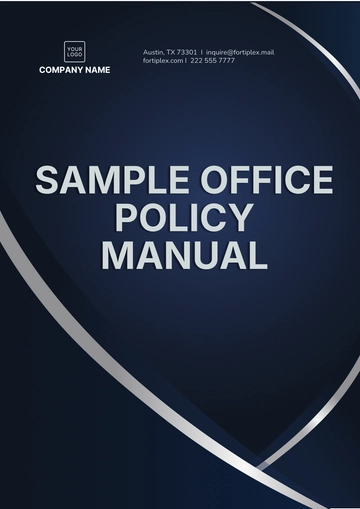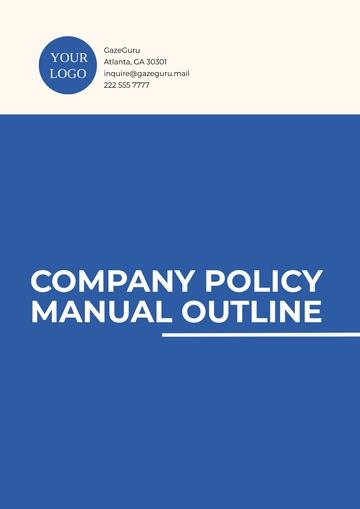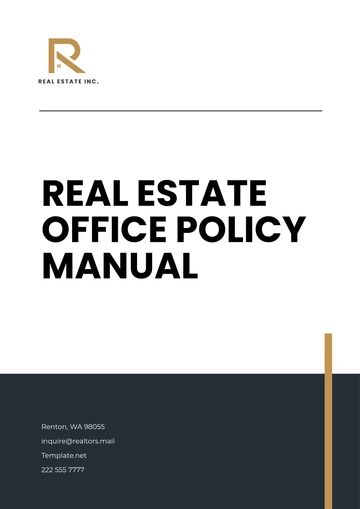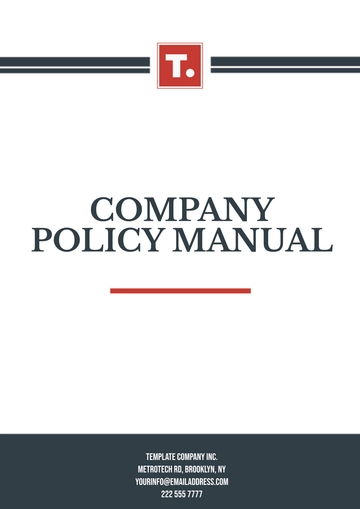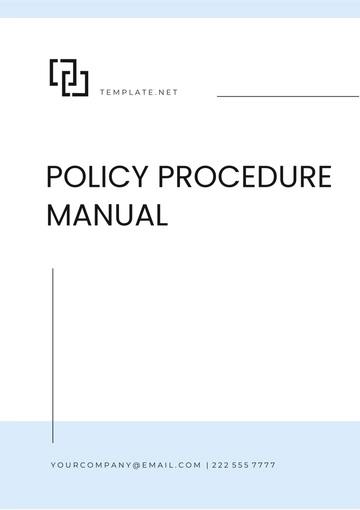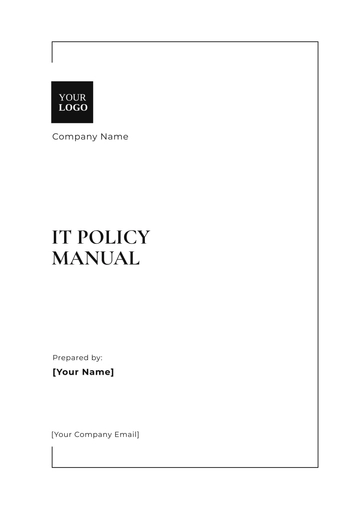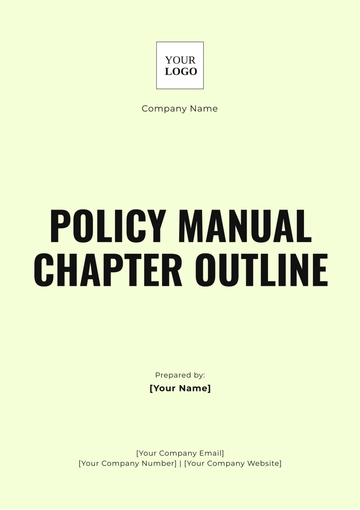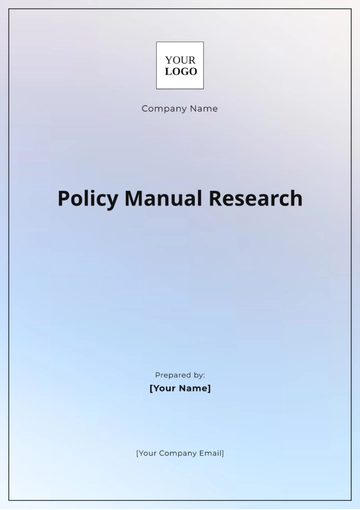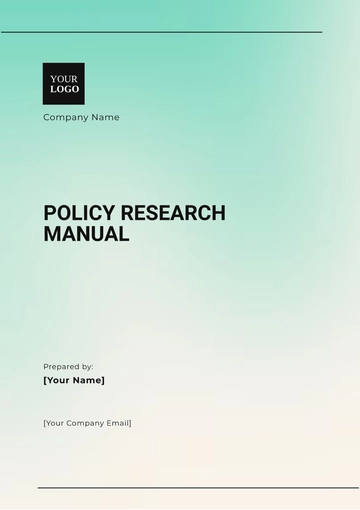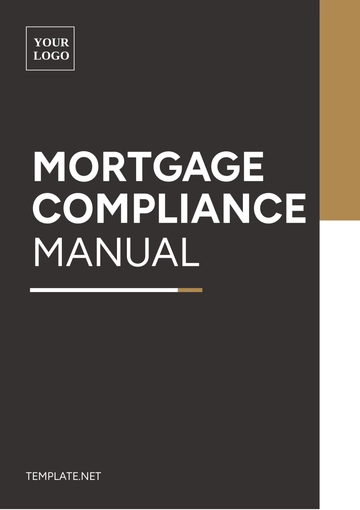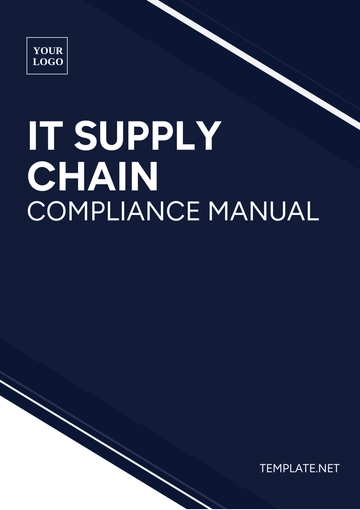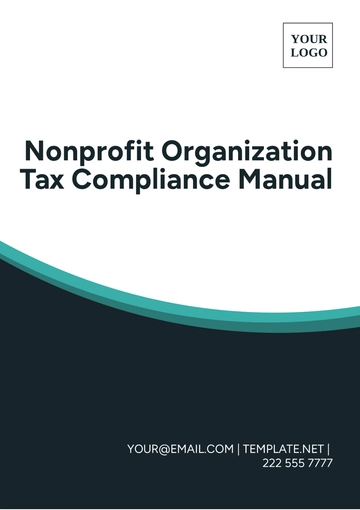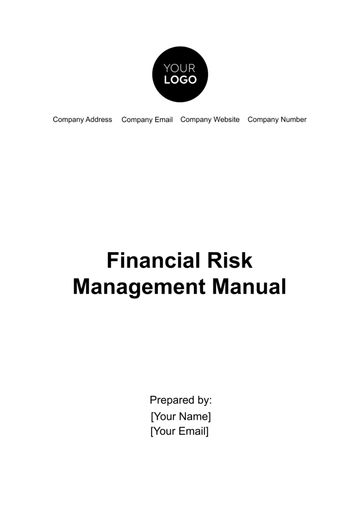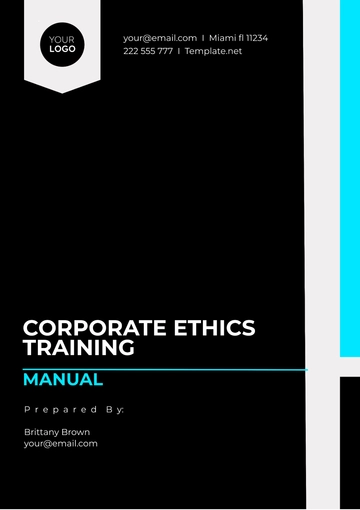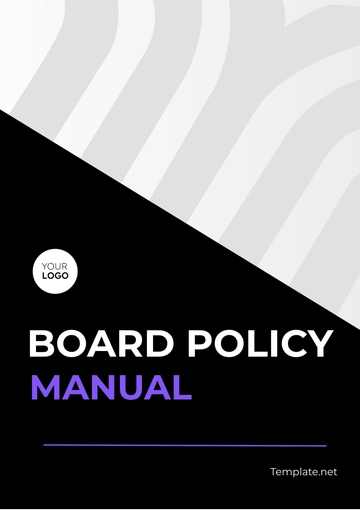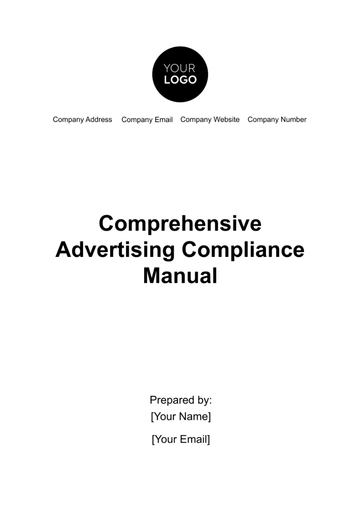Free Talent Management & Succession Planning Manual HR
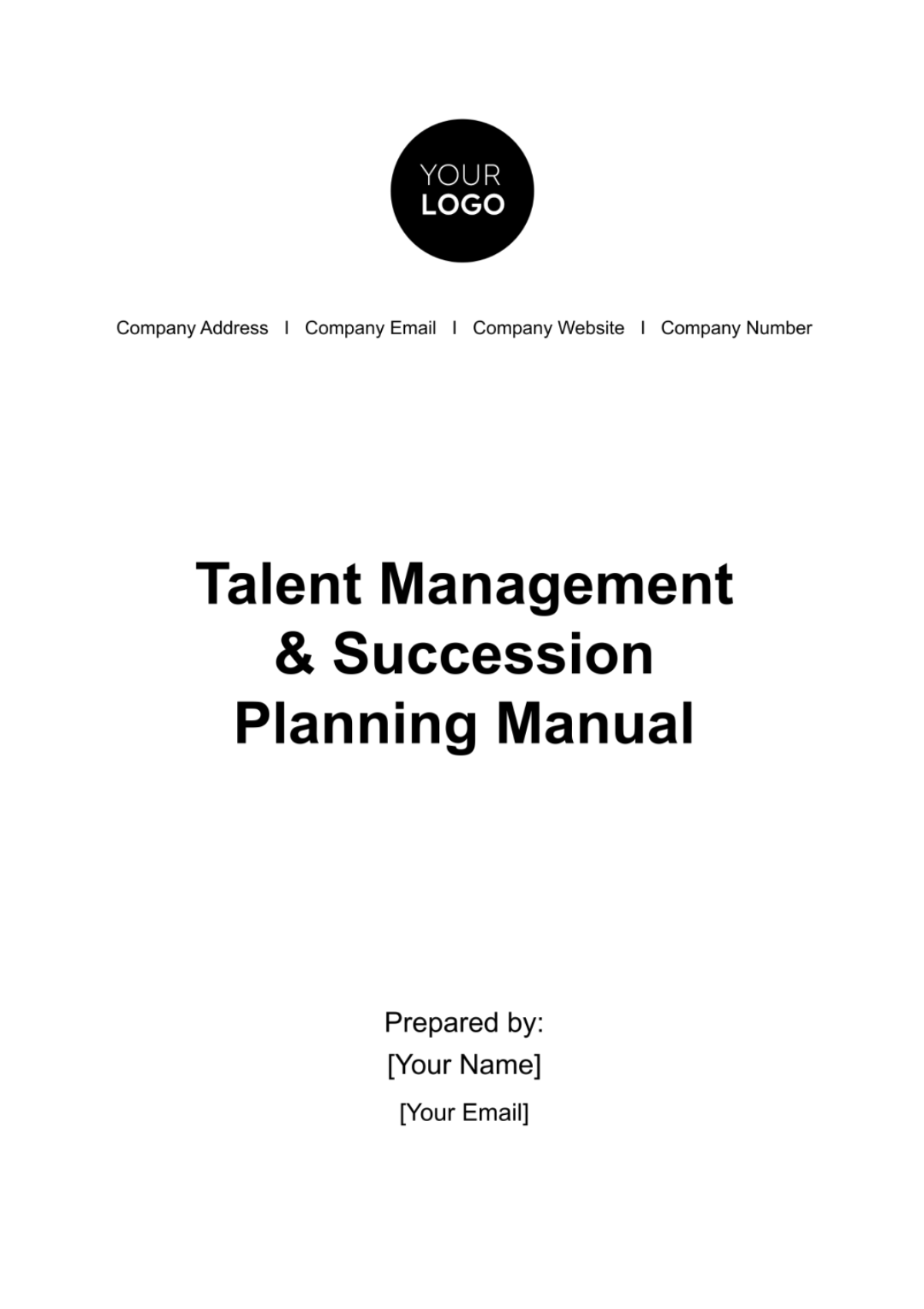
Planning Manual
Table of Contents
I. Introduction to Talent Management & Succession Planning .................2
II. Talent Management Framework .....................................................................3
III. Succession Planning ..........................................................................................5
IV. Talent Retention and Engagement ...............................................................7
V. Conclusion ...........................................................................................................10
Introduction to Talent Management & Succession Planning
Welcome to the Talent Management & Succession Planning Manual. In today's competitive business landscape, effectively managing and nurturing your organization's talent is not merely an option; it is a strategic imperative. This manual serves as a comprehensive guide for HR professionals, managers, and organizational leaders, equipping you with the necessary insights, strategies, and tools to excel in talent management and succession planning.
Consider this: In a recent survey conducted by the Society for Human Resource Management (SHRM), 86% of HR professionals reported that an effective talent management strategy was crucial for their organization's success. Furthermore, research by Deloitte found that companies with strong succession planning programs are 2.2 times more likely to outperform their peers in terms of shareholder value.
Importance of Talent Management & Succession Planning
Talent management and succession planning are the cornerstones of organizational prosperity. Picture this scenario: Without a talented workforce strategically aligned with your company's goals, your organization would be like a ship without a captain navigating treacherous waters.
Consider the facts: According to a Gallup study, engaged employees are 21% more productive than their disengaged counterparts. This productivity boost translates directly into financial gains for your organization. Furthermore, a Harvard Business Review report highlights that businesses with robust succession planning are more adaptable and resilient in times of change.
Scope of the Manual
This manual casts a wide net, covering various facets of talent management and succession planning. From identifying and attracting talent to developing career paths and seamlessly transitioning key roles, it provides a comprehensive roadmap for achieving organizational excellence.
As a glimpse into the wealth of knowledge awaiting you, consider that effective talent management can reduce turnover by up to 50%, according to the Corporate Leadership Council. Furthermore, a study by the Center for Creative Leadership discovered that organizations with a strong succession planning process are more likely to be among the top-performing companies in their industry.
Key Terminology and Definitions
Before we delve into the specifics, let's clarify some key terminology:
Talent Management: This strategic process is akin to nurturing a garden, where the aim is not only to grow beautiful flowers but to ensure they continue to flourish. |
Succession Planning: Think of this as the organizational equivalent of having a backup generator; it ensures the lights never go out when key personnel depart. |
High-Potential Employees (Hippo's): These individuals are like hidden gems, waiting to be discovered and polished to shine in leadership roles. |
Career Pathing: Imagine it as constructing a well-maintained highway within your organization, facilitating employee journeys towards their career destinations. |
Throughout the following sections, we will delve deeper into each of these critical aspects of talent management and succession planning. Our aim is to provide you with practical insights and actionable strategies that will empower your organization to not only survive but thrive in the ever-evolving business landscape.
Talent Management Framework
In today's rapidly evolving business environment, effective talent management is the linchpin of an organization's long-term success. It involves a systematic approach to understanding, acquiring, nurturing, and optimizing the capabilities of your workforce. The Talent Management Framework comprises a series of interrelated components, each playing a crucial role in building a high-performing and agile organization.
Identifying Talent Needs
Assessing Current Workforce |
Assessing your existing workforce is akin to taking stock of the assets you already possess. It involves a meticulous evaluation of the skills, competencies, and untapped potential residing within your employee base. This process utilizes tools such as skills assessments, performance appraisals, and talent reviews to identify your organization's strengths and areas that need improvement. |
Identifying Skill Gaps |
Identifying skill gaps is a pragmatic step that emerges from assessing your workforce. It involves a critical examination of areas where additional training or development is necessary to bridge the divide between current skills and those required to achieve the organization's objectives. This invaluable data forms the foundation for crafting targeted training programs and development plans. |
Talent Acquisition and Recruitment
Sourcing Strategies |
Sourcing strategies are the initial threads of the talent tapestry. They are designed to align with your organization's objectives and goals. These strategies encompass a wide array of activities, from forging partnerships with educational institutions to harnessing the reach of social media and specialized job boards. The goal is to identify and attract talent that aligns with your organization's vision. |
Recruitment Processes |
Recruitment processes are the well-structured pathways leading to the selection of the right individuals. They require the establishment of clear job roles and responsibilities, adherence to consistent procedures, and the use of standardized interview questions and assessments. The objective is to evaluate candidates objectively, ensuring a fair and effective selection process. |
Talent Development and Training
Employee Training Programs |
Employee training programs serve as the crucible where skills and knowledge are honed. These programs encompass a wide spectrum of development needs, covering both technical and soft skills. Their effectiveness is measured through regular assessments and feedback mechanisms, ensuring that employees continue to evolve and contribute effectively. |
Skill Enhancement |
Skill enhancement represents the ongoing journey toward improvement. It is the promotion of a culture of learning within your organization, where employees are not just encouraged but empowered to acquire new skills and knowledge continually. Support for ongoing education and certification opportunities ensures your workforce remains competitive and adaptable. |
Performance Management
Performance Appraisals |
Performance appraisals are the compass that guides employees towards their objectives. They involve the implementation of a fair and transparent system for assessing employee performance against defined goals and objectives. Constructive feedback and collaborative improvement plans are integral components. |
Feedback and Improvement Plans |
Feedback is the compass needle that points to growth. Creating a feedback-rich environment ensures that employees receive regular input on their performance. Collaborative efforts are undertaken to develop improvement plans that harmonize with both individual career goals and the organization's strategic needs. |
Career Progression and Succession Planning
Identifying High-Potential Employees |
Identifying high-potential employees is the cornerstone of succession planning. These individuals exhibit exceptional skills and leadership potential. Their identification relies on structured assessments and performance data, identifying those who can confidently shoulder critical roles in the organization's future. |
Career Pathing and Development Plans |
Career progression is the roadmap that outlines an individual's journey within the organization. It involves developing individualized career development plans that provide clear steps for advancement. These plans are meticulously aligned with succession planning, ensuring a seamless transition when key positions become vacant. |
In the following sections, we will delve deeper into each of these elements, providing practical guidance and strategies for their effective implementation. Together, they form the intricate mosaic of talent management that can propel your organization toward excellence in the ever-changing business landscape.
Succession Planning
Succession planning is a strategic imperative that extends far beyond the act of replacing outgoing leaders. It is the keystone of ensuring the continuity and growth of an organization, underpinning its resilience and fostering stakeholder confidence.
Understanding Succession Planning
Importance and Benefit |
Succession planning is more than just a contingency measure; it's a strategic approach that safeguards an organization's future. Its significance lies in mitigating risks associated with leadership transitions, developing a pipeline of future leaders, and instilling confidence in stakeholders. When the torch is passed smoothly, the organization's ability to navigate crises and challenges remains intact. |
Key Objectives |
The core objectives of effective succession planning are clear:
|
Succession Planning Process
Talent Identification and Assessment |
The journey begins by identifying potential successors for pivotal positions. This involves assessing employees' skills, competencies, and readiness for leadership roles. The process must be structured and comprehensive, drawing on performance data, skills assessments, and evaluations of leadership potential. |
Developing Succession Pools |
Building succession pools is the next step, encompassing individuals identified as potential successors. These individuals are cultivated through mentorship, training, and exposure to leadership opportunities. The goal is to ensure that the pool is richly populated with well-prepared candidates. |
Leadership Development Programs |
Effective leadership development programs are then implemented. These programs equip potential successors with the knowledge and skills required to excel in leadership roles. They may encompass leadership training, workshops, one-on-one coaching, and a tailored approach to individual growth. |
Implementation and Communication
Developing Succession Plans |
Detailed succession plans are crafted for key roles within the organization. These plans outline the precise steps to be taken in the event of a leadership transition, leaving no room for ambiguity. Accessibility to these plans is crucial, and they should be regularly reviewed and updated. |
Communication Strategies |
Effective communication is the linchpin of successful succession planning. Key stakeholders, including potential successors, should be well-informed about the organization's succession planning efforts. This transparency fosters a culture of openness and trust regarding leadership transitions. |
Monitoring and Evaluation
Tracking Progress |
Regular monitoring of succession planning efforts is essential. This includes evaluating the development of potential successors, tracking key milestones, and identifying any challenges that require attention. It ensures that the succession pipeline remains robust. |
Adjusting Plans as Necessary |
Succession planning is a dynamic and continuous process. Plans may need adjustment as circumstances evolve. If a potential successor's career goals change, the plan should be adapted accordingly. Flexibility is the hallmark of long-term success in succession planning. |
In the next section, we will delve into talent retention and engagement strategies, which are pivotal in retaining top talent and sustaining their motivation and commitment within your organization.
Talent Retention and Engagement
Opening Statement: "Talent retention and engagement are the twin pillars upon which a thriving and enduring organization stands. In this section, we will explore strategies and practices to not only keep your valued talent within the fold but also to ensure they remain enthusiastic, committed, and motivated."
Talent Retention Strategies
Competitive Compensation
Competitive compensation is the cornerstone of talent retention. To retain your top talent, it is imperative to regularly review and adjust salaries and benefits to ensure they align with industry and regional standards. This not only attracts new talent but also prevents existing talent from seeking greener pastures.
Career Development Opportunities
Employees are more inclined to remain with an organization that offers avenues for growth and career advancement. Cultivating clear career paths, providing training, and promoting from within whenever possible not only foster loyalty but also fuel a sense of purpose among your workforce.
Work-Life Balance
A healthy work-life balance is a non-negotiable factor in talent retention. Implementing policies that support flexible work arrangements, paid time off, and wellness programs creates an environment where employees can maintain a harmonious balance between their professional and personal lives.
Employee Engagement
Engagement Surveys
Regularly conducting employee engagement surveys provides valuable insights into the pulse of your workforce. These surveys serve as a litmus test, measuring the degree of engagement. The feedback obtained should be used to identify areas for improvement and to enact changes that bolster engagement.
Recognition and Rewards
Recognizing and rewarding employees for their contributions and achievements is a potent driver of engagement. This recognition can take various forms, including monetary rewards, promotions, or simply acknowledging a job well done. Such gestures amplify the feeling of being valued within the organization.
Employee Feedback
The creation of channels for employees to provide feedback and share their ideas is pivotal in fostering engagement. An engaged workforce often feels heard and valued when their suggestions are taken into consideration. Actively seeking and acting upon employee feedback contributes to a sense of ownership and commitment.
Diversity and Inclusion
Inclusive Work Environment
Fostering an inclusive work environment is essential. It is one where all employees feel valued, respected, and included, regardless of their background or characteristics. Promoting diversity and ensuring that policies and practices are free from bias underscores your commitment to inclusivity.
Diversity Training
Diversity training for employees and leaders is an instrumental step in promoting understanding and inclusivity. It encourages the appreciation of diverse perspectives and voices in decision-making processes. By embracing diversity, organizations foster innovation and growth.
Succession Planning Integration
Talent Mobility
Integrating talent mobility into succession planning is a strategy that not only benefits the organization but also engages employees. Encourage employees to explore different roles within the organization to broaden their skills and experiences. This not only prepares them for future leadership positions but also keeps them engaged in their current roles.
Talent Analytics
Leveraging talent analytics is another essential aspect of talent retention. Identifying high-performing employees who may be at risk of leaving allows you to proactively address retention challenges. Data-driven insights enable you to tailor retention strategies to specific individuals or groups.
Monitoring and Adaptation
Regular Assessments
Regularly assessing the effectiveness of your talent retention and engagement strategies is paramount. Monitor key indicators such as turnover rates, employee satisfaction levels, and engagement metrics. These assessments serve as barometers of your organization's health and effectiveness in retaining talent.
Adaptation
In the dynamic landscape of talent management, adaptation is key. What works today may not work tomorrow, so organizations must remain agile and responsive to changing employee needs and market conditions. The ability to evolve and fine-tune strategies ensures the continued attraction and retention of top talent.
Conclusion
In conclusion, the journey of effective talent management, succession planning, talent retention, and employee engagement is a vital expedition for any organization aspiring to thrive in the dynamic and competitive landscape of today's business world. It is a journey anchored in strategy, foresight, and commitment.
The strategies and best practices outlined in this manual serve as a compass, guiding your organization toward the cultivation and retention of top-tier talent. Effective talent management lays the foundation, succession planning fortifies the structure, talent retention sustains the momentum, and employee engagement fuels the journey.
It is essential to recognize that talent management is not a finite endeavor but an ongoing process. Just as the world evolves, so do the needs and aspirations of your workforce. Regular reviews and updates of your talent strategies are not mere suggestions but imperatives. In this perpetual cycle of assessment and adaptation lies the key to enduring success.
Your commitment to nurturing a talent-driven organization is not just commendable; it is transformative. It is an investment in the future, a pledge to harness the full potential of your most precious resource—your people. Through your unwavering efforts, you are contributing significantly to the organization's continued growth and prosperity.
As you embark on this journey, remember that the path may be challenging at times, but the rewards are substantial. By aligning talent with strategy, preparing for the future through succession planning, by retaining and engaging your workforce, your organization is poised to not only weather the storms of change but to thrive in the ever-evolving landscape of business.
Thank you for your dedication to excellence and for your pivotal role in shaping the future of your organization. Your journey has just begun, and the possibilities are boundless.
- 100% Customizable, free editor
- Access 1 Million+ Templates, photo’s & graphics
- Download or share as a template
- Click and replace photos, graphics, text, backgrounds
- Resize, crop, AI write & more
- Access advanced editor
Take your talent strategy to the next level with Talent Management & Succession Planning Manual HR Template. Craft seamless talent pipelines, nurture future leaders, and ensure organizational resilience. Customize processes, set development pathways, and secure your talent pool. Streamline succession planning, drive growth, and prepare for the future. Get yours today!


